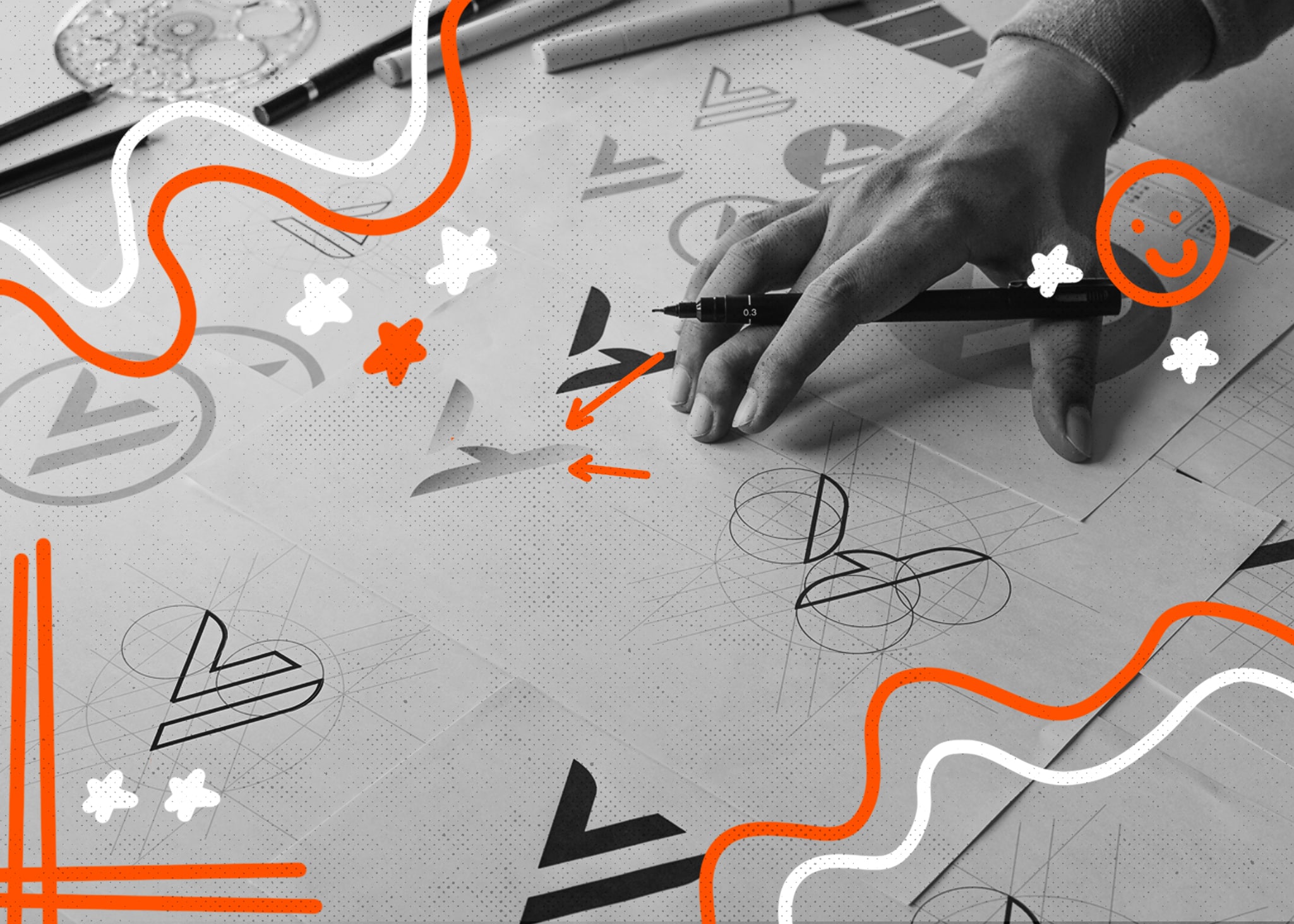Designing a logo can seem fun and exciting…until you actually sit down to create one. Designing a logo that communicates your brand identity and connects with consumers can be daunting, but it is a key aspect to successfully building brand awareness. According to a 2021 branding survey, logos are the most recognizable brand identifier, with 75% of consumers recognizing a brand by its logo alone. Logos not only allow consumers to easily and immediately identify brands, but they also create a visual association in consumers’ minds between brands and products. Logos can convey brand values, and 42% of consumers say they form opinions about a brand’s personality based on their logo.
One critical factor to research when designing your logo is consumer perception. During the height of the global Covid-19 pandemic, many high-profile brands like Volkswagen, Nike and Coca-Cola created social distancing logos, or slightly altered versions of their existing logos that visually encouraged consumers to maintain distance or remain at home, to show consumers that they were taking social distancing and public health seriously.
Logo Design Essentials
As a dedicated branding agency, we start the brand strategy, design, and activation process with research. When designing your logo, a great place to begin is logo design research and the associated consumer perceptions. Exploring how consumers may perceive your brand based on your logo design can help you make the best decisions now and avoid costly redesigns in the future.
Descriptive vs Nondescriptive
Descriptive logos incorporate a product or service into the logo design so that consumers can quickly understand a brand, while nondescriptive logos do not correlate with a brand’s products or services. A recent Harvard Business Review study confirmed that descriptive logos tend to be more effective and make a more favorable impact on consumers’ brand perceptions, unless the brand was associated with sad or unpleasant services.
Symmetrical vs Asymmetrical
Recent brand studies show that consumers infer a brand’s personality based on its symmetry. For example, a 2018 study of the connection between logo design and brand personality discovered that due to the visual asymmetry effect, consumers tend to perceive asymmetrical logos as more exciting than symmetrical logos. So, it stands to reason that, if your brand personality is creative and exciting, an asymmetrical logo is the way to go!
Simple vs Complex
Simple logos use a singular object, color or word to communicate a brand, while complex logos incorporate multiple graphics, colors or text into their designs. A simple logo can be more aesthetically pleasing because of its minimalist structure and help ensure legibility on small digital devices. Just be careful not to oversimplify your design, which can also make it more difficult for consumers to identify what a brand stands for. Complex logos, while slightly more intricate or colorful, can more easily convey their messages to a larger consumer base. Research surrounding the psychology of logo color shows just how big an impact color has on critical components like brand values, characteristics and conversion rates. But if your logo or wordmark is more complex, be wary of how your elements may scale on mobile devices, and how difficult it may be to embroider your mark if apparel or uniforms are essential to your brand.
Your Logo Checklist
Designing your logo is an investment. Logos are often used for decades and can even become synonymous with the products or services your brand offers (think Apple and Nike). After you’ve chosen between a descriptive or nondescriptive, symmetrical or asymmetrical, and simple or complex logo design, use the following checklist to make sure your logo can stand the test of time and serve your business well as it grows and evolves:
- Ownable: Does your logo differentiate your brand from the competition and promote recognition?
- Timeless: Is your logo based on research, or is it based solely on trends that may change or disappear?
- Intentional: Does your logo represent and communicate your brand positioning?
- Consistent: Can your logo be incorporated into all internal department and external marketing materials to demonstrate brand consistency?
- Scalable: Is your logo legible and recognizable at different sizes? Is it too complicated to embroider, screen print, or decal onto merchandise, websites, social media or storefronts?
Even after you’ve created your logo and considered this checklist, take a moment to solicit user feedback. Checking in with consumer perception prior to launching your new design may save you substantial time, money and headache. Even established, household brands can make costly logo mistakes, so it’s always worth your time to collect data and understand consumer perceptions before making logo decisions.
But remember, a brand is more than a logo. While your mark is a way of visually identifying your company and necessary to making a positive first impression – it’s only one piece of your identity. And at the end of the day, if your brand needs support to create a dynamic logo, redesign an existing one, or expand your brand identity, reach out! (matter) is always here to make your voice matter more.
